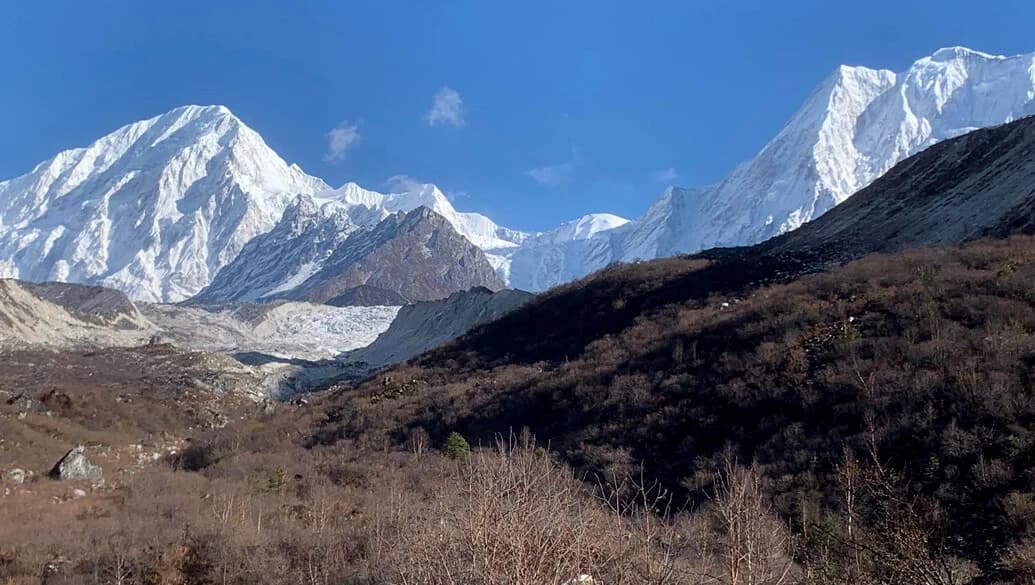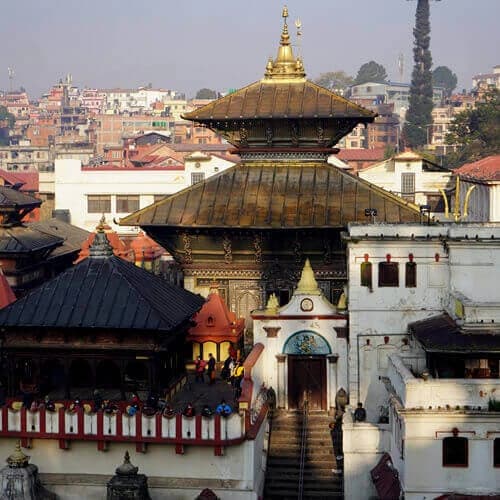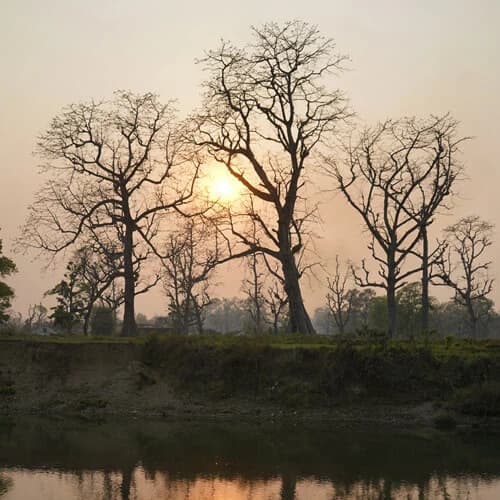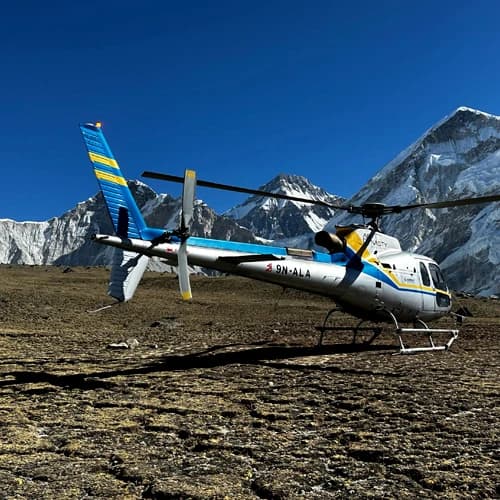Best Features of Trekking the Manaslu and Annapurna Circuit
- Conquer Larkya La Pass (5,106 m/16,752 ft) and the Thorong La Pass (5,416 m/17,769 ft), two of the most challenging and rewarding high-altitude passes in Nepal.
- Hike through diverse landscapes, ranging from lush subtropical forests and the Budhi Gandaki Gorge to desert-like terrains and massive glaciers in the high-altitude regions.
- Stay in traditional Gurung and Tibetan villages like SamaGaon, Dharapani, Manang, and Ghorepani, experiencing their warm hospitality, culture, and daily lifestyle.
- Stand in awe at the mesmerizing panoramas of Manaslu (8,163 m/26,781 ft), Mt. Annapurna (8,091 m/26,545 ft), Dhaulagiri (8,167 m/26,795 ft), Ganesh Himal (7,422 m/24,350 ft), and Larkya Peak (6,249 m/20,502 ft).
- Witness a great stream of glaciers formed by peaks like Cheo Himal (6,820 m/22,375 ft), Himlung Himal (6,820 m/22,375 ft), Nemjung (7,140 m/23,425 ft), Gyaji Kang (7,038 m/23,090 ft), and Kang Guru (6,981 m/22,904 ft).
- Explore hidden gems like the ancient Pungen Gompa Buddhist monastery (4,000 m/13,123 ft) and the serene turquoise waters of Birendra Lake (3,691 m/12,110 ft).
- Visit the sacred Muktinath Temple (3,711 m/12,175 ft), revered as a pilgrimage site for both Hindus and Buddhists, famous for its 108 stone faucets.
- Peaceful hike through the Manaslu Conservation area, a sanctuary of wildlife, with a chance to spot specials like the tahr, and Himalayan Marmot.
The Ultimate Himalayan Journey: A Manaslu Annapurna Circuit Trek Overview
The 24-day Manaslu with Annapurna Circuit Trek is a fusion of two popular trails in Nepal, creating a dynamic narrative that appeals to trekkers seeking both challenge and a deeper exploration. Combining these routes offers an authentic and unique Himalayan experience, which blends two distinct journeys into one epic adventure.
The journey begins in Machha Khola, leading you deeper into the Manaslu region, considered to be a pristine, less-crowded, and "hidden gem" of Nepal. The route then seamlessly transitions into the Annapurna region, where you will hike the classic and iconic Annapurna Circuit trail. Both of these trek routes are renowned for their diverse landscapes, natural beauty, and cultural immersion.
In the coming days, trekkers will be hiking through the Manaslu Conservation Area, following Budhi Gandaki and the Marshandi Khola, two major river systems in the region. The trek is comparatively longer than most standard trails and is ideal for physically fit adventurers with a passion and commitment to take on a significant challenge.
One of the major highlights of the trek is crossing the Larkya La Pass (5,160 m) and the Thorong La Pass (5,416 m). This section offers trekkers close-up views of three of the world's highest peaks—Manaslu (8,163 m), Annapurna I (8,091 m), and Dhaulagiri (8,167 m). The Manaslu section of the trek ends after you descend to Dharapani, after which it connects to the Annapurna Circuit trail.
Trekking these isolated routes and conquering high mountain passes offers solitude and an unparalleled experience. We understand that encircling Annapurna, the world's highest mountain, at such a high altitude is not easy. So, we have planned our itinerary with strategic rest days at Sama Gaon and Manang for adequate acclimatization. This helps travelers adapt to the increased altitude and hike without overexerting their bodies.
Additionally, our experienced guides, who are trained in first aid and altitude sickness, will be there to assist you every step of the way. We are a team of pioneers in the trekking industry with over 15 years of experience. Our credibility is built on firsthand experiences of travelers and treks that have resulted in a 98% trip success rate. This is a reflection of our commitment to safety and ethical standards, which speaks to the trustworthiness of our service.
If you're interested in booking this trip with us, please get in touch with us via WhatsApp or Email. Wanna learn more about the journey? Continue reading the package.
What Can You Expect from the Manaslu Annapurna Circuit Trek?
Manaslu with Annapurna Circuit Trek begins with a scenic drive from Kathmandu, passing through suburban areas, hills, and settlements. The first half of the journey takes travelers to the remote Manaslu region, a place of remote wilderness and rich Tibetan-influenced Buddhist culture. The landscape gradually transforms into high-altitude alpine terrain as you pass through villages like Machha Khola, Jagat, Deng, Namrung, Shyala, and SamaGaon.
You will be staying at teahouses run by the local natives of the community in the villages. It offers you the perfect opportunity to experience their culture, tradition, and a closer look at their Himalayan lifestyle. Along the way, you will also come across several mani walls and monasteries adorned with prayer flags and intricate decorations. We encourage you to visit sacred sites like Pungen Gompa to participate in ceremonies and prayers for an enhanced spiritual experience.
After conquering the demanding Larkya La Pass and Thorong La Pass, the trek seamlessly transitions into the Annapurna region. The hike ahead is filled with encounters of several historical sites and religious shrines, including the sacred Muktinath Temple. It is a revered pilgrimage of both Hindus and Buddhists, famous for its 108 holy water spouts and a continuously burning eternal flame.
Apart from the religious and cultural wonders, the expedition offers breathtaking, close-up views of mountains, including Himal Chuli (7,893 m/25,846 ft) and Nilgiri (7,061 m/23,166 ft). Having said that, the transition of landscapes from subtropical forests to high-altitude glacial moraines and arid alpine landscapes is all part of a single, unforgettable expedition.
A Trekker's Journey: Narrative of a Typical Day in Manaslu Annapurna Circuit Trek
Hiking the Manaslu trek with Annapurna Circuit is a profound experience of a vibrant trail, where every day brings a new vista, a new challenge, and a deeper connection. Your day begins early, as trekkers rise between 6:00 and 7:00 am to the crisp, clean mountain air. After a quick wash and packing your gear, you'll gather in the cozy, communal dining hall of the teahouse.
You will then fuel yourself with a hearty breakfast before setting out for the day. The morning hike is typically the longest segment of the day, with lunch served around noon at a convenient teahouse along the trail. This needed break gives you a chance to rest and refuel before continuing the afternoon's walk. You will be walking an average of 6 to 8 hours daily, and covering a distance of 8 to 10km.
After arriving at the day's destination, dinner is served between 6:00 and 8:00 pm, and the rest of the night is spent in the dining hall. Trekkers gather around here to chat, play games, and share stories before retiring to their unheated rooms for an early bedtime. It is a perfect opportunity for you to interact with fellow trekkers and share your experiences of the day.
Why Trek with Outfitter Nepal? Our Expertise, Safety, and Ethical Commitment
We understand that a high-altitude adventure like the Manaslu Trek Combined with Annapurna Circuit requires a strategic approach for safety. Our primary goal is to ensure you can immerse yourself in the Himalayas with confidence, knowing you will be cared for by seasoned professionals. We at OutFitter Nepal Treks present to you our well-planned itinerary, which includes crucial rest and acclimatization days to minimize the risk of altitude sickness. Additionally, our guide will be encouraging the "climb high, sleep low" strategy, a proven method for a safe ascent.
They will also be responsible for your well-being and provide you with medical support and helicopter evacuation in the event of an emergency. All of our staff members are equipped with an oximeter to monitor your blood oxygen level to ensure your body is adapting to the increasing altitude. With over 15 years of experience, our primary aim is to organize a successful expedition and promote sustainable trekking with eco-friendly practices to preserve the nature and culture of the region we operate in.
Our affiliation with governing bodies like Tourism Agencies Association of Nepal (TAAN) and Nepal Mountaineering Association (NMA) reflects our reliability, quality service, and ethical conduct. OutFitter Nepal is dedicated to addressing any queries you may have and resolving any logistical, physical, and psychological anxieties you might have. For more questions regarding the itinerary, please don't hesitate to contact us.
The standard cost for the Manaslu Trek with Annapurna Circuit starts at 1525 USD for a single person. We provide the package based on group sizes as well. Please follow the details in the right table on the website for the price details.
Note: If you have any queries regarding the Manaslu and Annapurna Circuit Trek Itinerary and cost, please contact us via email and WhatsApp. We are available 24/7 to assist you.




